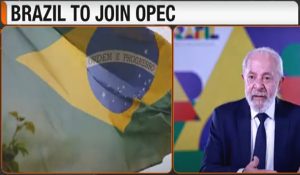Oil surges, with U.S. crude closing above $103 a barrel, as Russia intensifies attacks on Ukraine cities

SAN FRANCISCO
EnergiesNet.com 02 28 2022
Oil futures rallied Tuesday, with the U.S. benchmark climbing by 8% for its highest finish since July 2014, as Russia’s invasion of Ukraine entered a sixth day and Western sanctions against Moscow were seen disrupting supply despite an effort to exempt energy flows.
Futures extended their gains even after the International Energy Agency announced that its member countries have agreed to release 60 million barrels of oil from their emergency reserves to ease any supply shortfall caused by Russia’s invasion of Ukraine.
Price action
- April West Texas Intermediate crude CL.1, +11.09% CL00, +11.09% CLJ22, +11.09% rose $7.69, or 8%, to settle at $103.41 a barrel on the New York Mercantile Exchange after hitting an intraday high at $106.78. The settlement was the highest for a front-month contract since July 22, 2014, according to Dow Jones Market Data.
- May Brent crude BRN00, +1.95% BRNK22, +1.95%, the global benchmark, added $7, or 7.2%, to close at $104.97 a barrel on ICE Futures Europe, the highest finish since Aug. 8, 2014.
- April natural gas NGJ22, +4.34% settled at $4.573 per million British thermal units, up 3.9%.
- April gasoline RBJ22, +7.43% added 5.3% to $3.089 a gallon.
- April heating oil HOJ22, +9.96% rose 7.5% to $3.151 a gallon, the highest finish since February 2014.
Market drivers
The biggest impact of the IEA’s oil reserve release is “on market sentiment, given the delay and staggered nature between an announcement and the barrels hitting the physical market,” said Matt Smith, lead oil analyst, Americas, at Kpler.
Read: Oil surges, but history says prices eventually fall after countries release emergency reserves
On Tuesday, the IEA announced an agreement for the release of 60 million barrels from member reserves.
Meanwhile, OPEC+ — the Organization of the Petroleum Exporting Countries and its allies, including Russia — will meet Wednesday to decide on production levels for April.
The group is likely to “stay the course with the current easing schedule,” analysts at RBC Capital Markets wrote in a note dated Monday. OPEC+ has stuck to a plan to raise production by 400,000 barrels per day.
Still, the RBC Capital Markets analysts said they “do not entirely rule out that there could be a strategy shift in the coming weeks, if there is an actual physical supply disruption or the Ukraine conflict devolves in such a way that the current OPEC+ partnership model becomes untenable.”
Meanwhile, shelling by Russian forces continued to pound civilian targets in Kharkiv, Ukraine’s second-largest city, on Tuesday, according to news reports, as satellite images showed a 40-mile convoy of Russian tanks and other military vehicles advancing on Kyiv, the capital.
Russia’s Defense Ministry said it would target intelligence and communications targets in Kyiv,; Russian forces hit the capital’s TV tower, while news reports said Moscow was shifting to a strategy of pounding civilian areas in an effort to demoralize Ukrainian resistance.
Western nations over the weekend and on Monday put additional sanctions on Moscow, blocking selected Russian banks from the SWIFT interbank messaging system and taking aim at the country’s central bank in an effort to impede its ability to access foreign-exchange reserves. The moves, however, were designed to exempt energy flows from Russia, a major producer of oil and natural gas.
But analysts said the sanctions appeared to also undercut demand for Russian commodities.
Commodities consumers are increasingly reluctant “to buy oil, liquefied natural gas, coal, metals and grains from Russia due to the uncertain legal situation,” said Carsten Fritsch, commodity analyst at Commerzbank, in a note.
“The fact that several Russian banks have been excluded from the international SWIFT payment system makes paying for deliveries more difficult. Furthermore, Western banks are refusing to finance the transactions,” he wrote.
marketwatch.com 03 01 2022












